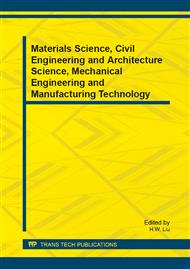p.1047
p.1052
p.1057
p.1061
p.1064
p.1070
p.1074
p.1079
p.1083
Numerical Simulation of Effects of Spray Angle on Flow, Combustion and Emissions of Diesel Engine
Abstract:
Previous papers which researched the effects of spray angle were mainly focused on the influence of spray angle on the performance and emissions of diesel engine. Few papers clarified the effect of spray angle on the airflow in detail. Airflow and turbulence have a significant influence on the combustion and distribution of emissions.The effects of spray angle on the flow, combustion and emissions of diesel engine were studied in this paper by a numerical simulation method. The results indicated that the spray angle had an obvious impact on the vortex and turbulence. The distribution of high temperature areas and emissions depend on the vortex and turbulence. With the increase of spray angle, the maximum cylinder pressure and temperature increase gradually. The heat release rate increases with the increase of spray angle. The CO and soot emissions were the lowest when the spray angle is 155°, however, the NOx emissions was the highest at that spray angle.
Info:
Periodical:
Pages:
1064-1069
Citation:
Online since:
January 2014
Authors:
Keywords:
Price:
Сopyright:
© 2014 Trans Tech Publications Ltd. All Rights Reserved
Share:
Citation:


